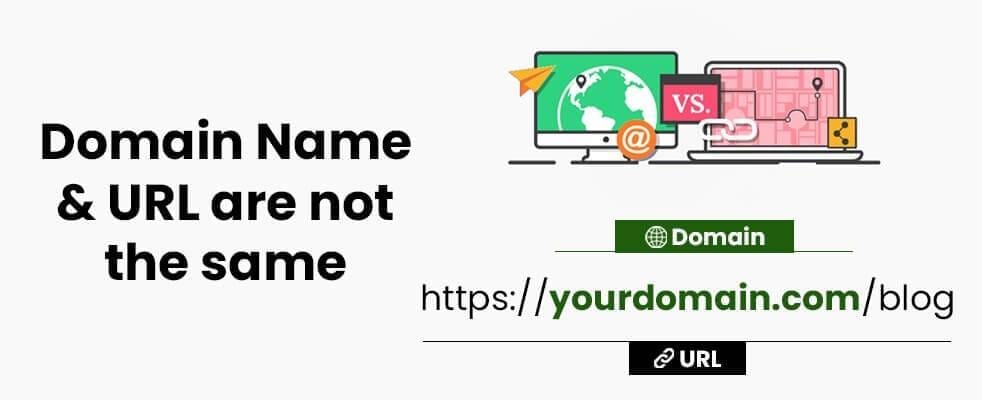
The difference between a URL and a domain name is frequently misunderstood. Are you one of them? If yes, this blog is meant for you. Are these two the same or is there any difference between them? Astonishing to a lot of people, yes, they are both different. Domain name and URL are not the same. However, because the terms are used so interchangeably, it’s understandable why people get confused with both of them. This confusion has been created because of a mere misunderstanding. But yes, there is a difference. To simplify the concept and get a clear idea on the topic, keep reading to reveal the difference.
What is a Domain name?
In earlier days, a long set of numbers was assigned to every website, which was mandatory for accessing those sites. This set of numbers is called an IP Address with public, private, static, and dynamic types. Example: 49.248.222.98 With the high usage of internet browsing, remembering IP Addresses for all websites is not an easy task. Hence, domain names were invented. Domain names act as identification for websites. Just like living beings are identified with specific names, domain names do the same with websites. This domain name is a string of text that is mapped with a specific IP Address.
Example, the domain name of the company ConnectReseller – The Domain Name Registrar is www.ConnnectReseller.com, this website also has an IP address for the same. Which one will you find the easiest to remember? Definitely the domain name. Domain names mostly contain words from brand names, which make it easier to remember them. To simplify the concept, consider domain names as a nickname to IP Addresses. This process of reducing the browsing complexity is possible due to the process of DNS lookup. When a user types a domain name, DNS helps the information understandable to the computer by translating it into an IP Address. According to Verisign, there are currently over 359.8 million domain names registered. The flowchart of domain management begins with a Registry, followed by registrars, and then the end customers. i.e registrants. Resellers can also buy domains from registrars and sell it to customers. ConnectReseller is one of the examples of domain registrars. In this case, connectreseller is the domain name and .com is the TLD (Top-level-domain). Other TLDs (generic) include .org, .net, .co, .mobi and ccTLDs such as.in, .ca, .us.
What is a URL?
URL stands for Uniform Resource Locator. Just like we have street and house addresses, a URL is the address of a website. The URL is to be typed at the top of a web browser in the navigation bar. To find a certain website, simply type its URL into the search bar. This URL includes all of the information your computer needs to find the right page, image, or document on a website. A simple example would be https://www.connectreseller.com/. If you go on another link of the same website, say for example you wish to visit the blog page, the URL for the same would be https://www.connectreseller.com/blog/. Let’s split this URL and learn its namings. HTTPS is a protocol with full form as Hypertext Transfer Protocol Secure. The ‘S’ in this means that the website is safe to browse. Www is the world wide web, connectreseller is the domain name, .com is the TLD and blog is the path. There also exists websites with only HTTP at the beginning. These websites are not safe to visit, hence google always gives a warning to turn back to safety when opening any such website. A protocol is a command that informs your computer to read the following information as hypertext. This is a structured language that employs logical links known as hyperlinks, between different nodes on the web page that contain text.
To sum up, a Domain name is a part of the URL whereas a URL is the complete address of a website. Both the terms are used to access a website, but their functions vary. Hence, the Domain name and URL are not the same.




